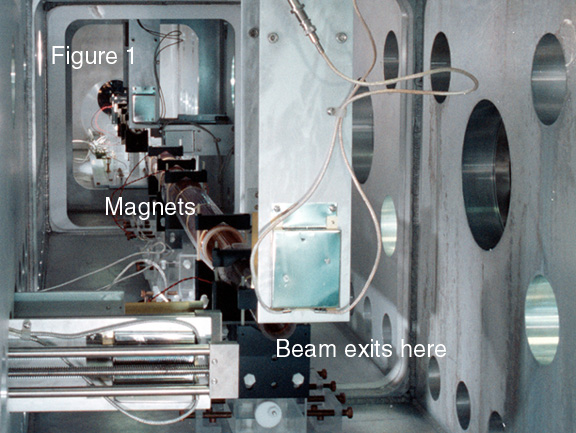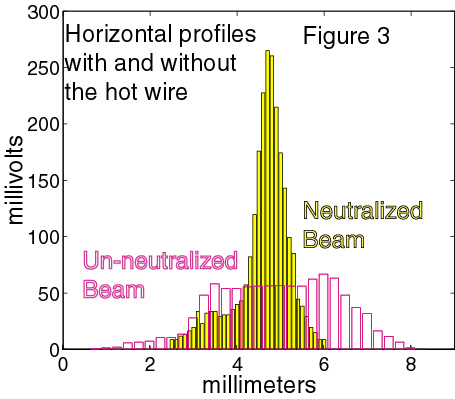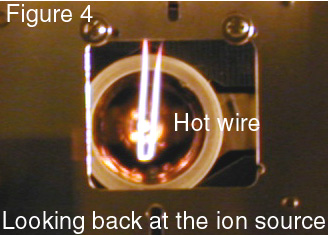Scaled Final-Focus
Experiment
To ignite a HIF target, the ion beams must be
focused onto a very small region. The typical
indirect-drive HIF target is a small metal cylinder
surrounding an even smaller sphere of fusion fuel. The
ends and, for some designs, the walls of the cylinder are
made of a materials that convert the ion beam energy into
x-ray energy to heat and compress the target. For
present target designs, these "converters" have a diameter of
approximately 1-2 cm, which sets the size of the "bulls eye"
that beams with thousands of Amperes of current must
hit.

A straightforward approach to the final-focus problem is to
use series of quadrupole lenses to direct the beam onto the
target. Ballistic focusing, where the ion beam is
mostly un-neutralized as it approaches the fusion target, is
considered a baseline method. A series of specially
designed quadrupole magnets is placed at the end of the
accelerator. These magnets produce a conically
converging beam with a cone half angle of about 1°,
causing the beam diameter to shrink to the size of the target
as it reaches the center of the reactor chamber. This
convergence angle must overcome the repulsive space-charge
force of the beam ions, as well as the small random spread in
their transverse velocities (emittance). Such a system
was part of the a report detailing a complete HIF power plant
design. It was this system that was chosen to be the
subject of experimental study at LBNL. To obtain a
relevant result, the scaled experiment should duplicate many
of the physical properties in the design appropriate to
focusing the beam. In particular, the 100 meter long
system used in was modeled at one-tenth dimensional scale
with magnets that have a 5 centimeter bore diameter inside a
10 meter vacuum system. Fig. 1 shows a photograph
of the beam line. The experimentally focused beam fit
inside a 1mm diameter circle, as seen in Fig. 2.

Some driver designs call for beams which have so much force
from the space charge that ballistic focusing by itself will
not get the beam small enough to match the size of the
target. In this case, one could imagine using electrons
within the beam to shield the forces of one ion against its
neighbors; this is known as neutralizing the beam. We
explored this technique experimentally by increasing the beam
current by a factor of four, and then adding electrons to the
beam by passing it near a hot tungsten wire, as seen in Fig.
4. Figure 3 shows the difference between the un-neutralized
and neutralized focal spots.




